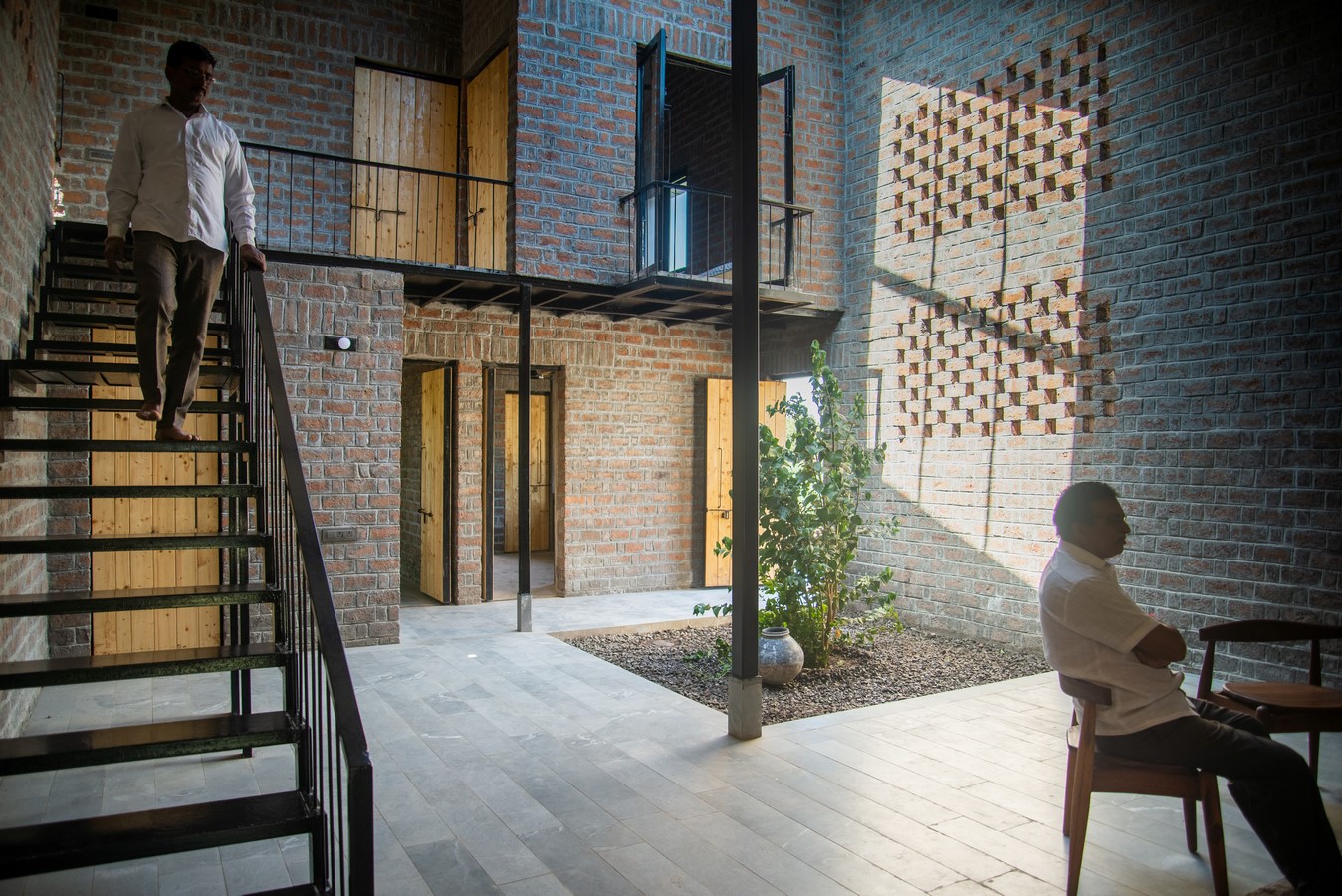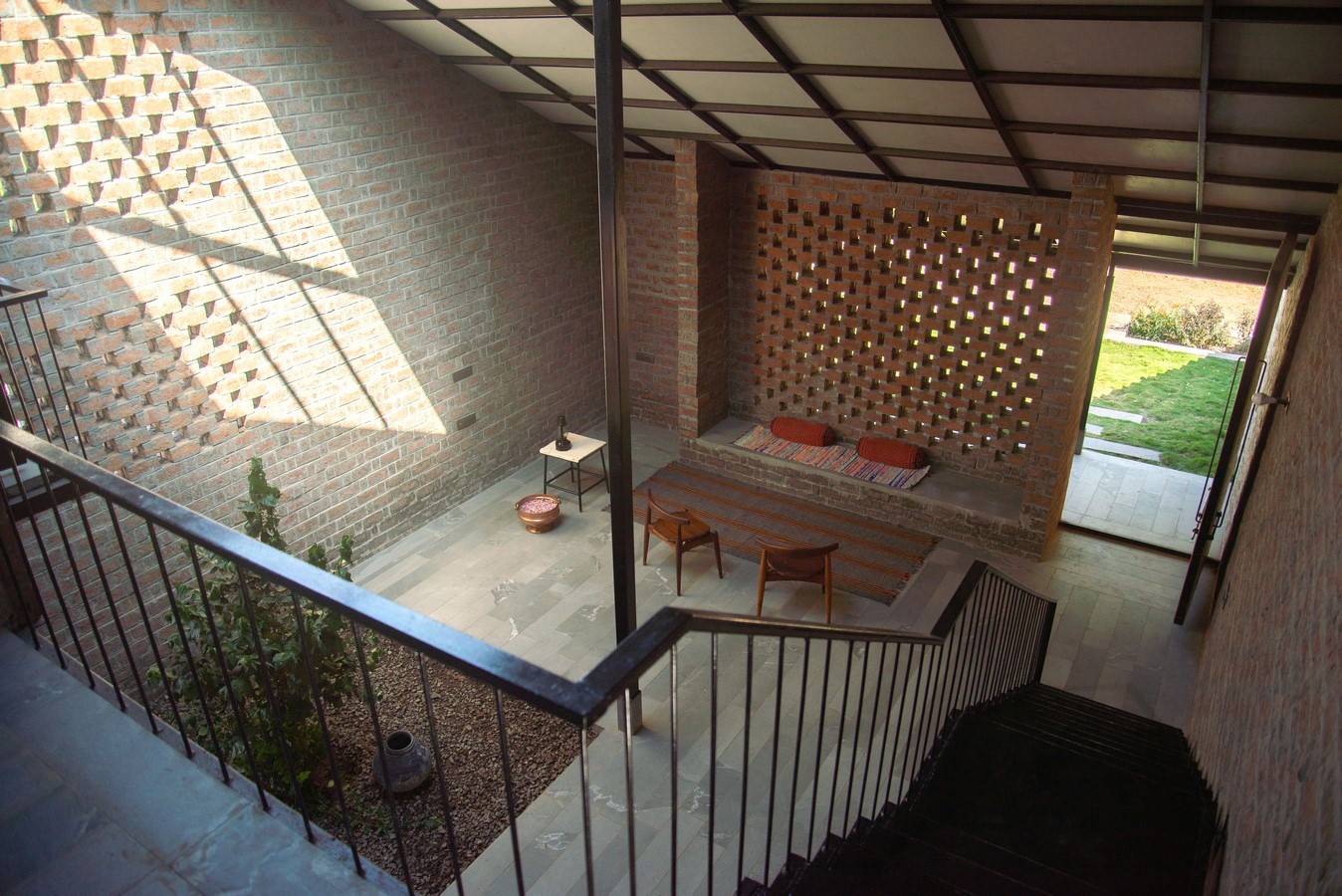The proposed dwelling is located at Dhotre town which is close to Kopargaon, Maharra. This house has begun with studies on rural economics of Maharashtra, where studies show a great fall in rural economic growth for numerous years. Farmers don’t get an assurance of earning after the harvesting of crops. This abode handleashts an issue of rural economy and house.
Studio Name: Atelier Shantanu Autade + Studio Boxx, Nashik
Lead Architects: Shantanu Autade, Rahul Dabir
Project Location: Dhotre, Kopargaon, Maharashtra
Gross Built Area (m2/ ft2): 200 sq.m.
Plot Area: 1000 sq.m.
Completion Year: 2022
Design Team: Harish Niranjan, Pooja Pingle, Diganti Phadol, Lakshita Singh, Akhil Vardhan Borra, Sheetal Kashyap, Rucha Nargund, Simran Shaha.
Consultants: Nirmiti Constructions.
Photo Credits: Abhijeet Ghospurikar

The Proposed built form is an experiment to explore an idea of expanding the house. This resembles the farmer’s state of mind, where he compromises on necessary things because of ambiguity and has a tendency to complete them partly.
The Proposed house is composed of two built forms connected by a covered pathway. Out of these two, one block is built by means of cost-effective experimental approach of construction where it includes,
1.RCC development till the plinth.
2.Load-bearing walls with rat-trap bond.
3.Fabricated floor rested on brickwork.
4.Shingle roofing to cover the house (lightweight roof).

Proposed House is a prototype capturing the realities of a lifestyle, at the intersection between traditional and modern, i.e. rurban. This project proposes strategies for an accommodative, versatile and inventive built form, taking after the research about the incremental approach of building and to illustrate an apt rural response. This house looks closely to the life of an agriculturalist and describes his thought of living life, “HALF IS MORE!!!!”
Talking around the proposed structure, it moves from diversity to the singularity which resembles with the house form of traditional Havelis from the north to Chettinad houses within the South India. As this house is intended for the farmer, who seeks for a plural space which accommodates numerous things. Within the rural context, threshold/ veranda plays an important role where it connects with the outside. Veranda is a key kinetic space of the house because of its various uses all through the daytime.

Courtyard within the house, permits the house to breathe and make a way for daylight to lit up the inside space. It gives an extra room size in a cramped staying space, which is utilized for stacking of grains, seating or talking with companions, resting at night etc. Opening of the yard from the top is protected with the reused glass which traps the heat at the top, whereas parallel walls on both sides are punctured that permits hot air to flow. A tree which is places within the court gives shade and keeps the space moist.
Beyond the courtyard, on the upper floor of the house have two bedrooms, which sit on top of the cooking, and resting space underneath. Bedrooms over extend to the terrace, which is open to the sky. This patio forms a supreme plural space, particularly for ladies to conduct different exercises like making of various dried foods, pickle etc. Patio permits a cool breeze to enter within the house amid a night from the west.
This house talks about the thought of a progressive rural house model with restricted resources and passive methods for climate control. The space-making exercise endeavored to form a place for all, realizing the way of life of the owner!!!!!!





















